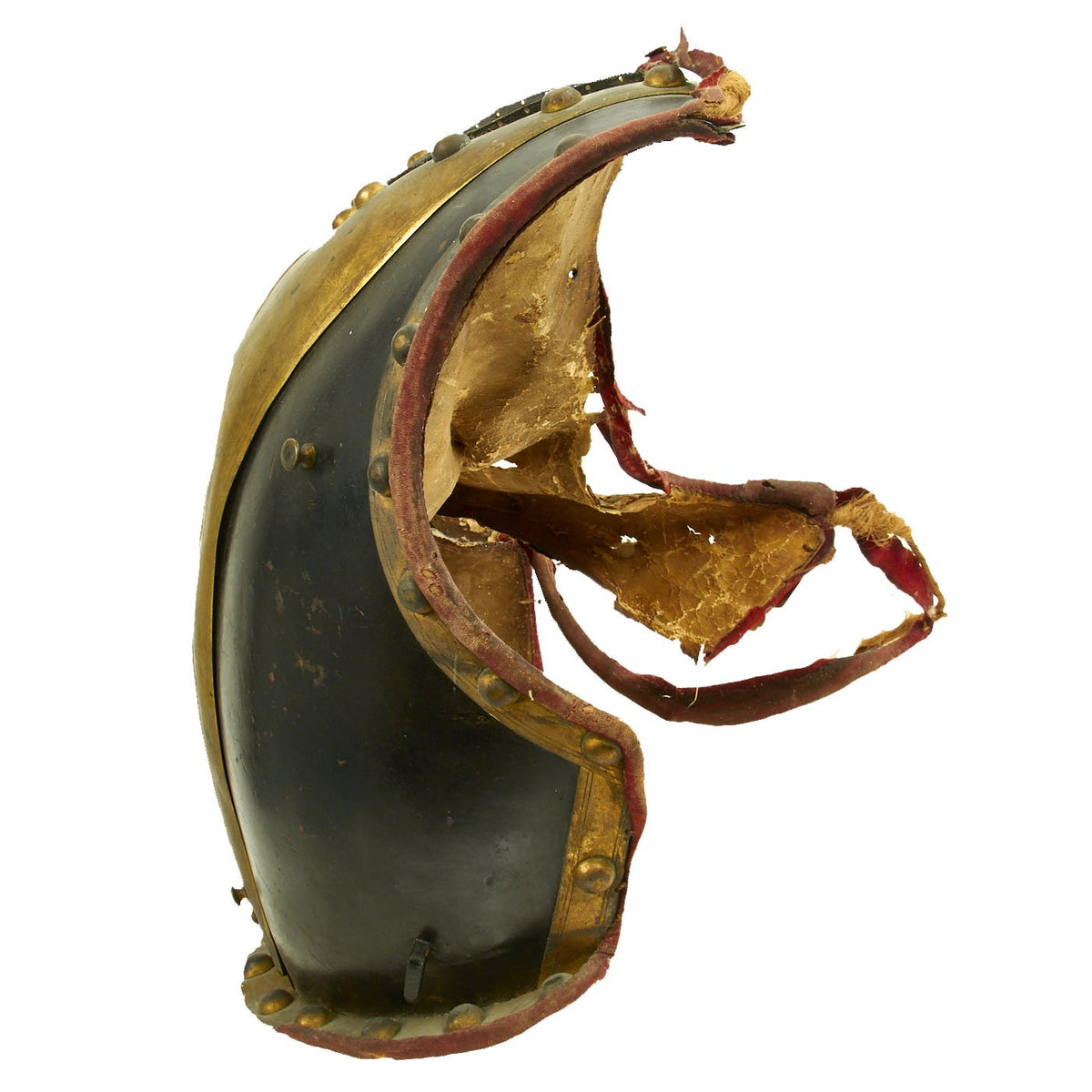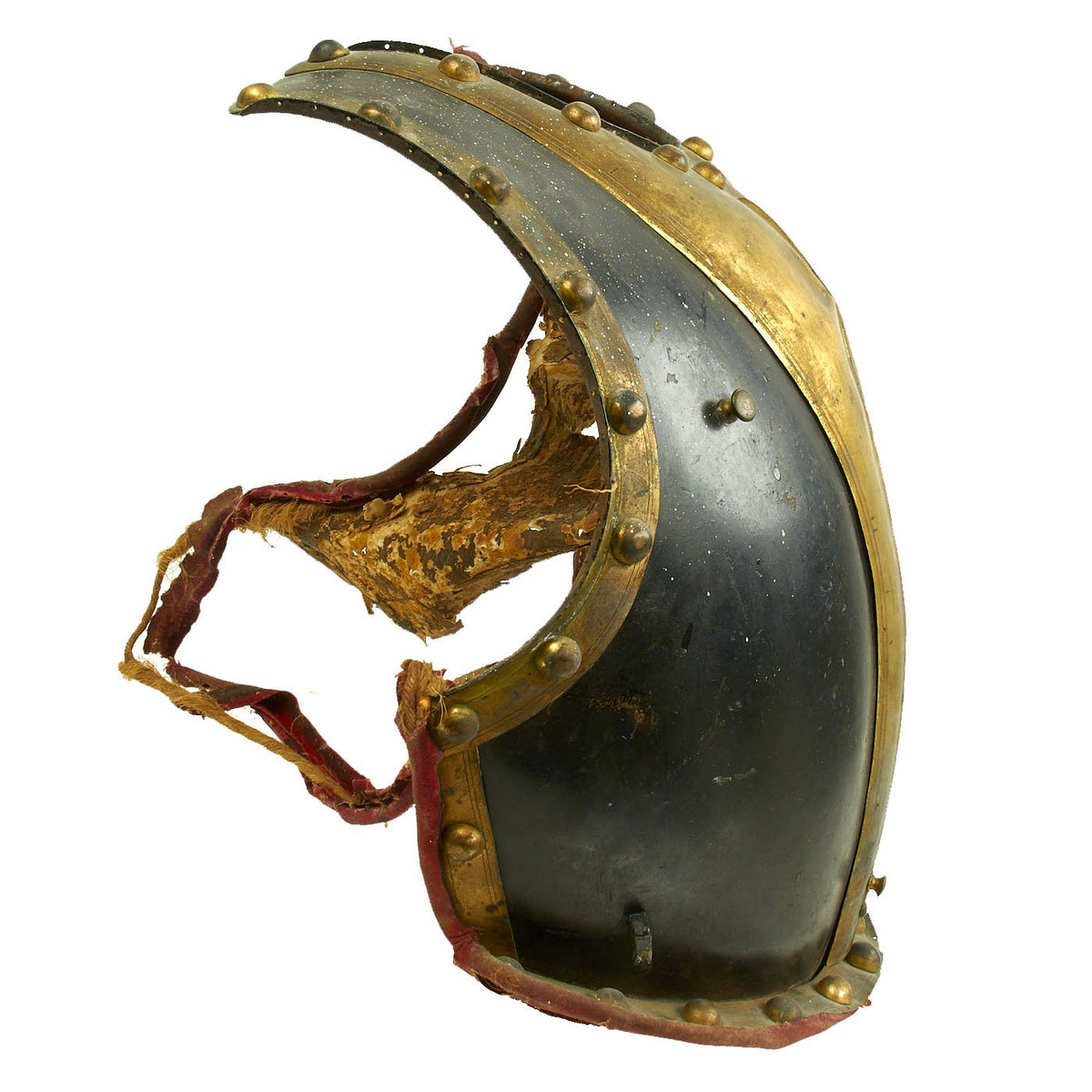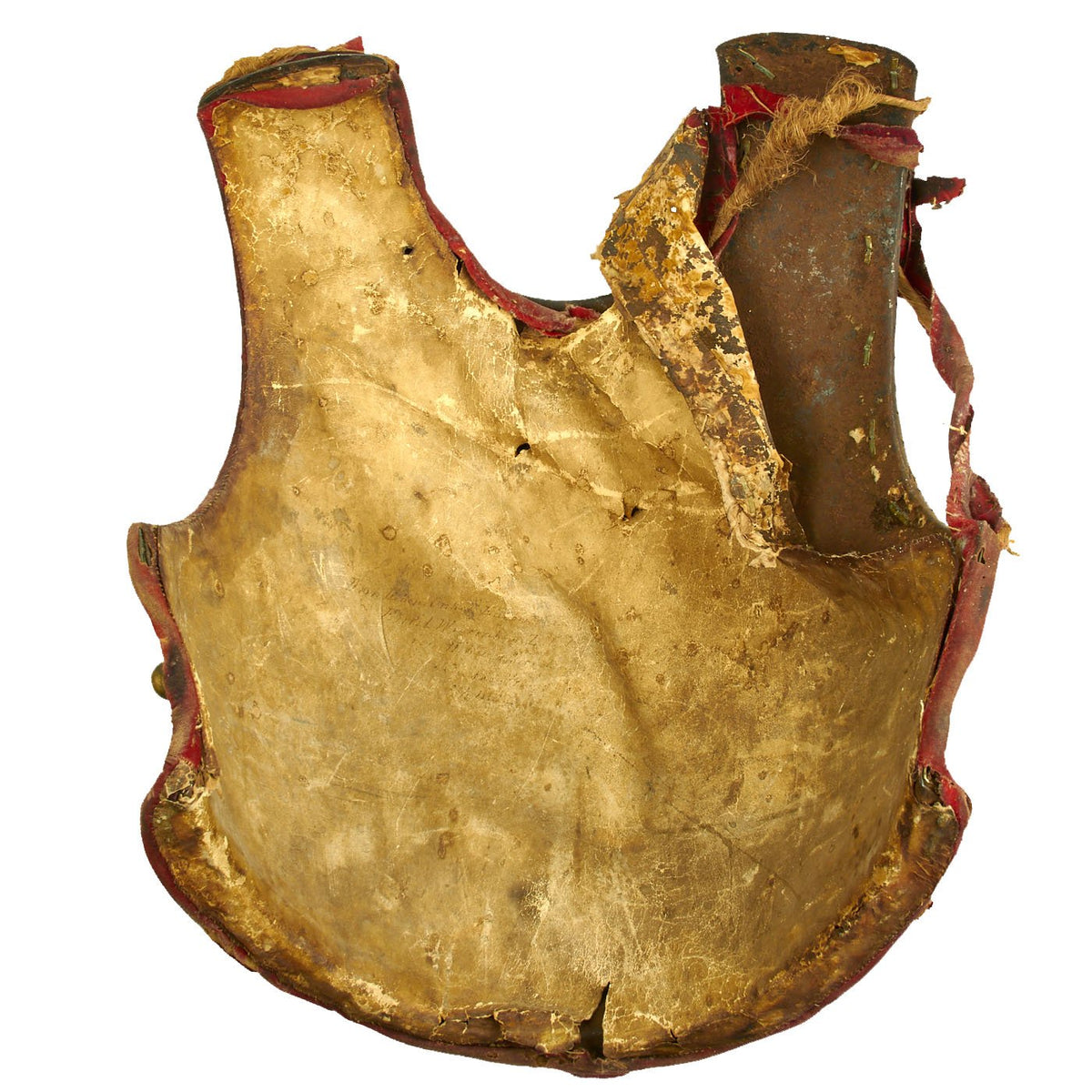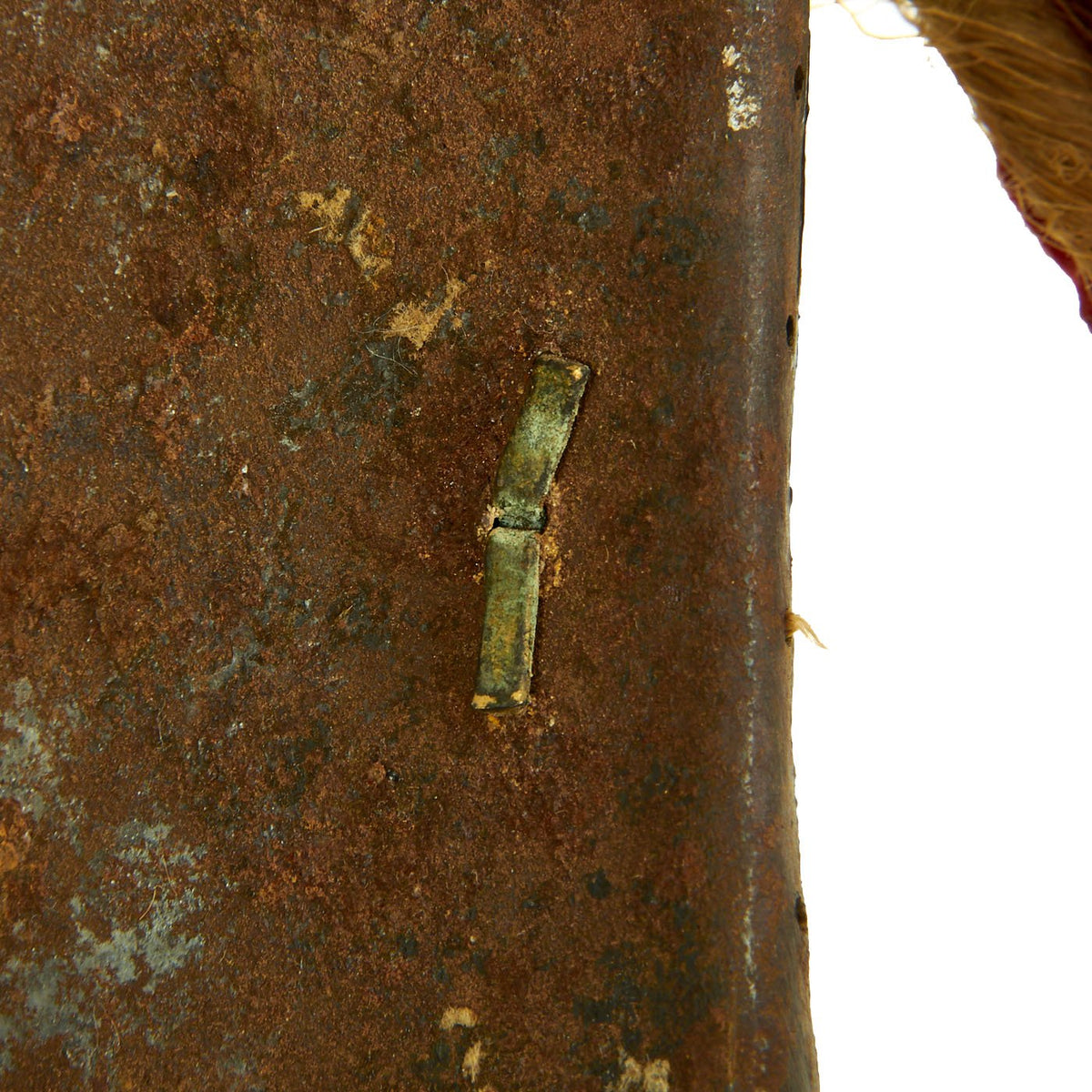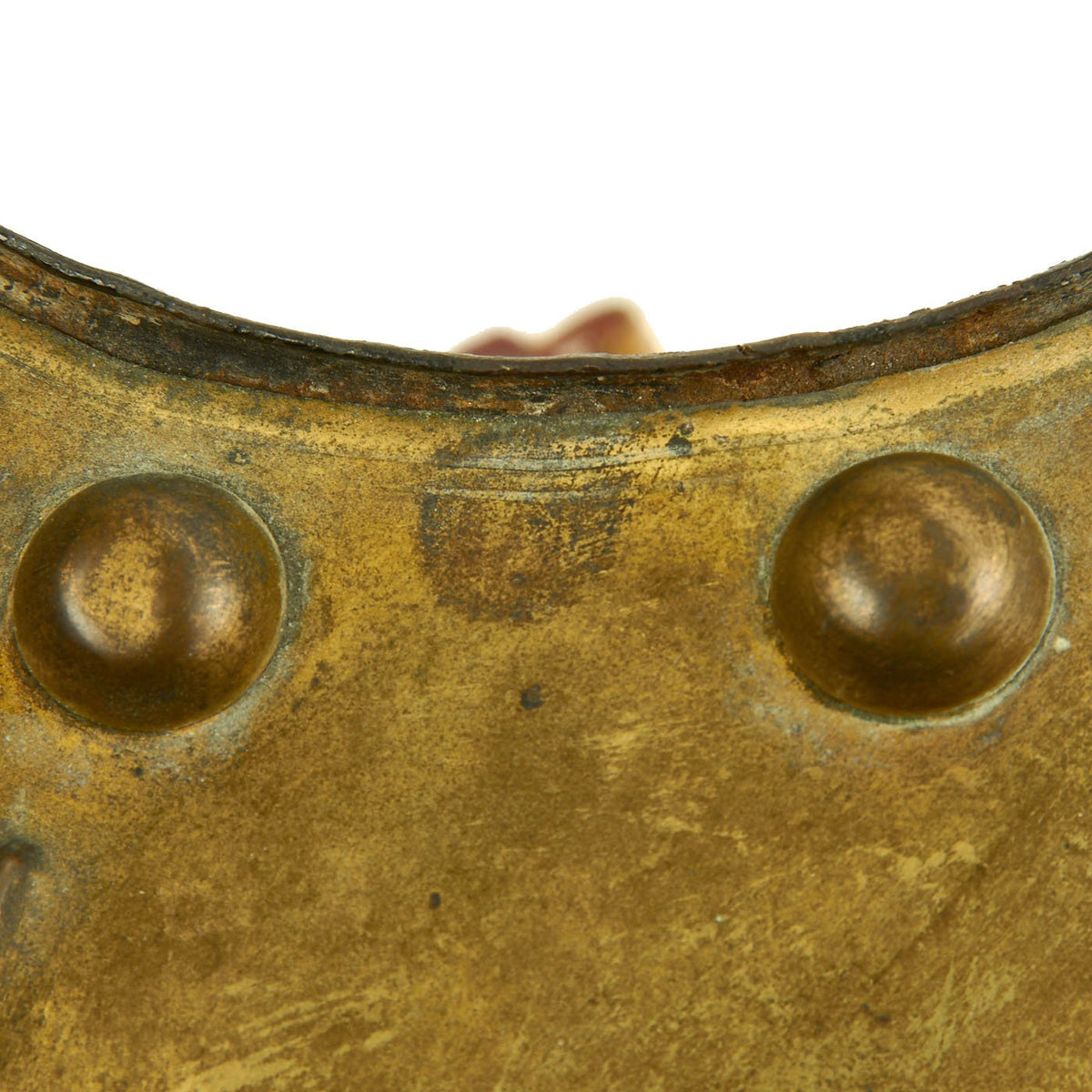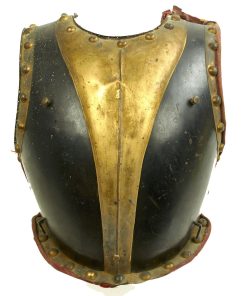Original Franco-Austrian War Pattern 1850 Field Grade Austrian Cuirassier Officer Cuirass Original Items
$ 2.995,00 $ 748,75
Original Item: Only One Available. We believe that this is a Franco-Austrian War Pattern 1850 Field Grade Austrian Cuirassier Officer Cuirass Breastplate. The armor is manufactured from iron, is magnetic and is finished in black. The breast plate incorporates a series of brass rivets around the perimeter. The rivets are affixed to five strips of brass: four on each side and one at the bottom. There are also two brass bolts that rise above the body of the breast plate and are placed on either side of the central vertical ridge on the chest, designed to receive the keyhole-shaped receptacles placed within the brass shoulder straps attached to the back plate. The center has a raised brass plate down the front of the chest tapering as it reaches the waist. The interior is lined in leather with red cloth trim. This lining is dray and delicate and has operated from the plate in multiple locations. Overall the condition of the breastplate is good with expected signs of wear from age and use. The hard-to-read, handwritten note indicating its use in “1859” suggests that it was used in the Franco-Austrian War which raged that year. A better condition but nearly identical Cuirass was sold at auction for close to $10,000 and can be seen at this link.
The Second Italian War of Independence, also called the Franco-Austrian War, the Austro-Sardinian War or Italian War of 1859, was fought by the French Empire and the Kingdom of Sardinia against the Austrian Empire in 1859 and played a crucial part in the process of Italian unification.
The background to the war was the Plombières Agreement between France and Sardinia on 21 July 1858, in which they agreed to carve up Italy between them, and the Franco-Sardinian military alliance signed in January 1859. Sardinia mobilized its army on 9 March 1859, while Austria mobilized on 9 April. On 23 April, Austria delivered an ultimatum to Sardinia, demanding Sardinia’s demobilization. Upon Sardinia’s refusal, the war began on 26 April. Austria invaded the Kingdom of Sardinia on 29 April and France declared war on Austria on 3 May.
The Austrian invasion was stopped by the arrival of French troops in Piedmont from 25 April onward. The Austrians were defeated at the Battle of Magenta on 4 June and pushed back to Lombardy, where the Franco-Sardinian victory at the Battle of Solferino on 24 June resulted in the end of the war and the signing of the Armistice of Villafranca on 12 July.
Austria ceded Lombardy to France, which in turn gave it to Sardinia. Sardinia exploited the defeat of Austrian power by annexing the United Provinces of Central Italy, consisting of the Grand Duchy of Tuscany, the Duchy of Parma, the Duchy of Modena and Reggio and the Papal Legations, to the Kingdom of Sardinia on 22 March 1860. Sardinia handed Savoy and Nice over to France at the Treaty of Turin on 24 March 1860.
Fast Shipping with Professional Packaging
Thanks to our longstanding association with UPS FedEx DHL, and other major international carriers, we are able to provide a range of shipping options. Our warehouse staff is expertly trained and will wrap your products according to our exact and precise specifications. Prior to shipping, your goods will be thoroughly examined and securely secured. We ship to thousands clients each day across multiple countries. This shows how we're dedicated to be the largest retailer on the internet. Warehouses and distribution centres can be located throughout Europe as well as the USA.
Note: Orders with more than one item will be assigned a processing date depending on the item.
Before shipping before shipping, we'll conduct a thorough inspection of the items you have ordered. Today, the majority of orders will be delivered within 48 hours. The delivery time will be between 3-7 days.
Returns
The stock is dynamic and we cannot completely manage it because multiple stakeholders are involved, including our factory and warehouse. So the actual stock may alter at any time. It's possible that you may not receive your order once the order has been made.
Our policy is valid for a period of 30 days. If you don't receive the product within 30 days, we are not able to issue a refund or an exchange.
You can only return an item if it is unused and in the same state as the day you received it. You must have the item in its original packaging.
Related products
Uncategorized
Uncategorized
Band of Brothers ORIGINAL GERMAN WWII Le. F.H. 18 10.5cm ARTILLERY PIECE Original Items
Uncategorized
Uncategorized
Armored Burgonet Helmet & Polearm from Scottish Castle Leith Hall Circa 1700 Original Items
Uncategorized
Uncategorized
Uncategorized
Uncategorized
Uncategorized
Uncategorized
Uncategorized
Uncategorized
Uncategorized
Uncategorized
Uncategorized
Uncategorized
Uncategorized
Uncategorized
Uncategorized

